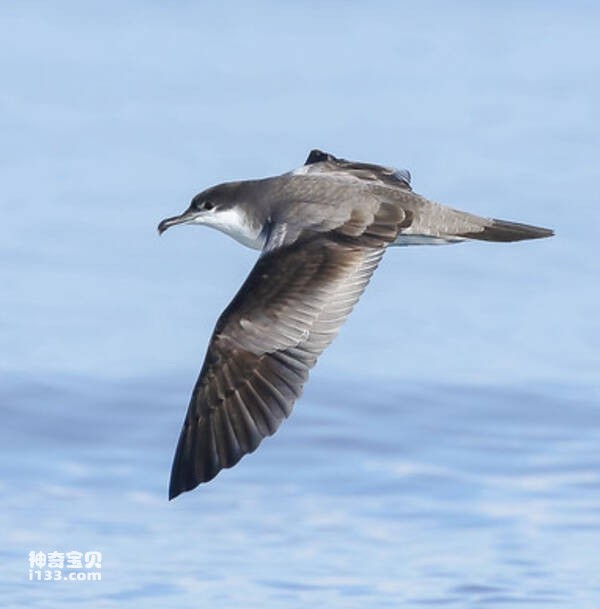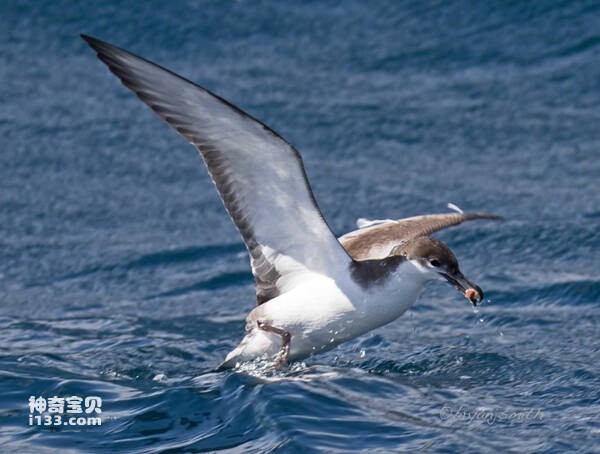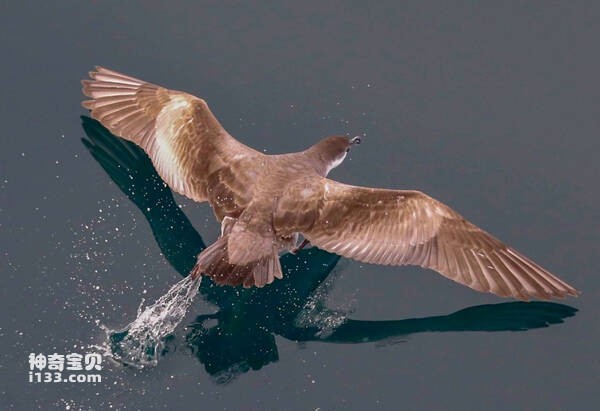Ardenna bulleri
IUCN
LCBasic Information
Scientific classification
- name:Ardenna bulleri
- Scientific Name:Ardenna bulleri,Buller's Shearwater,Pardela Dorsigrís
- Outline:Waterfowl
- Family:
Vital signs
- length:About 46 cm
- Weight:340-420g
- lifetime:No textual research information is available
Feature
The head and neck are dark brown, the wings are gray, and the back has a large dark "M" across the wings
Distribution and Habitat
Resident bird: Peru.
Breeding grounds: New Zealand.
Non-breeding areas: American Samoa, Australia, Canada, Chile, Cook Islands, French Polynesia, Marshall Islands, Mexico, New Caledonia, Niue, Norfolk Island, Russia (East Asia), United States, small Islands off the mainland, Wallis Islands and Futuna Islands.
Wandering (non-breeding grounds) : Fiji.
Wandering: Japan.
Uncertain origin (seasonal uncertainty) : Costa Rica, French Southern Territories, Kiribati, Micronesia, Nauru, Samoa, Solomon Islands, Tokelau, Tonga, Tuvalu and Vanuatu.
Unknown source: Ecuador.
The sooty Shearwater is a species of pelagic seabird. It usually forages on the continental shelves near the North and South Islands of New Zealand, sometimes flying to the Chatham Islands. They spend most of their time at sea, but return to land to breed. The species nests in caves and rock crevices and on ledges along coastal and island shores, with nests often hidden under dense vegetation. It can survive
Appearance
Pattern, composed of dark brown feathers. The wedge-shaped tail is darker and contrasts sharply with the taupe rump. The underbody and underwing are white, with a narrow dark grey trailing edge visible on the underwing, but usually widening towards the wingtip. The leading edge is narrow and limited to the distal part. White undercoat on rump and tail. The head is dark brown or dark brown. The color is lighter where the hindneck meets the brown-gray dorsal plume. The dark brown crown contrasts sharply with the white cheeks. Chin and throat pure white.
The elongated hook-like beak is black-gray with a darker tip. The iris is dark brown. The inside of the legs and webbed feet are pink, while the outside of the tarsals and outer toes are dark brown.
Both sexes have the same plumage, but the female has a shorter beak and is slightly smaller than the male. Subadult birds are like adult birds.
Details
Sooty Shearwater (scientific name: Ardenna bulleri) foreign name Buller' s Shearwater, Pardela Dorsigris, no subspecies. Ardenna bulleri was classified as a shearwater (Puffinus) until 2014.

The sooty Shearwater breeds on the Purnaz Islands near Tutukaka, north of New Zealand. After breeding, they migrate north into the Pacific Ocean, overwinter in subarctic waters, and then migrate south along the west coast of North America. In August, large numbers of birds can be seen near Southern California. Immature subadults spend the breeding season in their wintering grounds as far south as Chile.
After breeding in the North Pacific Ocean and migrating, and then moving south along the west coast of North America, the flight is strong, accompanied by long glides interspersed with powerful wing beats. Sometimes to keep up with the flock, they fall into trees so they can take off. In strong winds, they soar and skim the water, rarely flapping their wings.
The sooty shearwater groans, coos, and wails in a colony, but is usually quiet at sea. A variety of sounds can be heard while breeding, including rapid croaks, cackles, trills, and meows. It feeds on krill, squid, small fish, salps and jellyfish.

The sooty shearwater feeds at night to avoid being attacked by seabirds larger than it and to protect itself from predators when it returns to land. It took off after sunset. Fishing in groups on the water is very noisy. The bird usually uses its beak to catch prey below the surface of the water, also forages while flying, descends near the surface, and may also submerge its entire head while swimming. This species does not dive. Sometimes they feed in groups with other shearwaters.
The sooty shearwater nests in dense colonies. When they return to their breeding grounds, males clean their nests to attract females before laying eggs. When night falls, the flock is active and the birds are noisy as they fly through the air. Each Shearwater calls out as it passes its burrow, hoping for a response from its mate. Individual differences in voice and the tune of the voice help them find their cave.
The sooty shearwater threatens and defends intruders in its nest with a variety of calls and open mouths. There may be some territorial disputes, but they are neither bitter nor violent. One male and one female. Mating takes place inside the cave and mainly involves two partners beak-pecking, but also preening each other. Both sexes make prolonged calls.

The breeding season occurs between September and May of the following year. Breed in groups. Caves are dug into well-drained slopes or clay between rocks. These breeding communities are established under tall trees in the forest or under lower coastal shrubs. The cave floor is covered with a fine carpet of leaves, branches and gravel. The incubation chamber is located at the end of the cave and can be 60 cm to 3 m long. The female lays a large white egg in late November. Both sexes incubate for 49-51 days, alternating every 4 days. The hatchlings are covered with gray fur. Adult birds feed their young by regurgitation. The chicks leave the colony after 14 weeks and head to the sea.
The total population is estimated to be 2.5 million (Marchant and Higgins1990), and perhaps this estimate may be too high (2013). The Orangi population was exterminated in 1936 and has since increased, but is suspected to have remained stable or even declined (G. Teilinlitt.2012, Waugh et al. 2013).
This species is at risk of bycatch throughout its range. Sooty shearwaters have previously been caught in North Pacific drift nets and may still be threatened by fixed nets. They may be caught in longline fishing, trawling, and on hand and reel, but by-catch levels have not been quantified and there is little documented evidence. In recent decades up to 2012, the Hauraki Gulf has been subject to intensive Seine fishing of pelagic fish, which interferes with important feeding areas and may have affected the species through depletion of food resources. Perhaps due to the associated effects of this fishery, climate change is expected to have a significant impact on the species due to their limited range, populations limited to islands up to 218 metres above sea level, and observed sensitivity to climate. Fluctuations during La Nina years and significantly lower reproductive rates. The poor breeding success recorded on Aurange Island in 2011 May be related to the strong La Nina event of 2010-2011, but data from some geolocator-equipped birds suggest that the incubation cycle is about twice as long as the cycle published in the 1980s (G. Terlorinlitt.2012), Domestic pigs previously existed on Aorangi Island, but were eliminated after the island was declared a protected area in the 1930s. Vegetation and soil conditions subsequently improved greatly (Heather and Robertson1997).
Listed on the IUCN Red List of Threatened Species (IUCN)2018 ver3.1 - Vulnerable (VU).
Protect wild animals and eliminate wild meat.
Maintaining ecological balance is everyone's responsibility!








